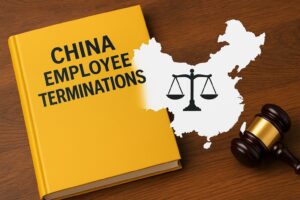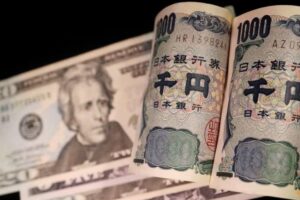
[SINGAPORE] Year-on-year falls in Singapore hotel rates and occupancy for the second quarter of 2025 were the result of dampened travel sentiment combined with new hotel rooms, industry watchers said on Thursday (Jul 31).
In the second quarter, Singapore hotels posted an average room rate (ARR) of S$263.83, down 1.1 per cent from the year-ago period’s S$266.89, Singapore Tourism Board (STB) data showed on Thursday.
The highest ARR within the quarter – at S$267.98 – was recorded in May, when Lady Gaga performed four shows at the National Stadium, in what was her only concert stop in Asia on her Mayhem Ball tour. But that was still a year-on-year fall, by 1.1 per cent from May 2024’s S$270.90.
The May 2025 ARR was also only a touch higher than April’s S$265.77 and June’s S$257.27, both of which were down 1.2 per cent year on year.
Other hotel industry indicators also dipped on a yearly basis. Revenue per available room (RevPAR) fell 1.7 per cent to S$205.15, from S$208.77 in Q2 2024. Year-on-year declines were recorded across April, May and June.
Maybank analyst Brian Lee said: “The fall in ARR and RevPAR in Q2 could reflect increased cost-consciousness among travellers, given global economic uncertainty, which could have led travellers to opt for more budget-friendly accommodation.”
BT in your inbox
Start and end each day with the latest news stories and analyses delivered straight to your inbox.
Singapore hotels’ average occupancy rate stood at 77.76 per cent in Q2 2025, down from 78.22 per cent in the year-ago quarter. The drag came mainly from June, because April and May recorded marginal improvements.
The June decline was in line with the dip in visitor arrivals, led by the month’s drop in Chinese tourists, Lee noted.
DBS analyst Geraldine Wong said: “New room supply meant a more competitive operating landscape for existing hoteliers.”
This increased supply was noticeable within Orchard Road and the Central Business District precinct, she said, highlighting the re-opening of Grand Hyatt Singapore and the launch of The Standard, Singapore, which came after Q2 2024.
This growth in supply is evidenced by the rise in available room nights, pointed out Wong Xian Yang, head of research for Singapore and South-east Asia at Cushman & Wakefield.
There were 5.9 million available room nights in Q2 2025, up 2.4 per cent from the year-ago quarter.
As for demand, the US-tariff-related uncertainty may have led to delayed or cancelled travel plans and less willingness to spend, both for business and leisure travel, observers said. “The strong Singapore dollar did not help as well,” DBS’ Wong added.
Overall room revenue, which reflects room supply, gained 0.6 per cent on the year to S$1.22 billion in Q2 2025, from S$1.21 billion. Year-on-year room revenue was slightly higher in April and May, but June’s takings were lower.
Across all measures, May was the best-performing month in the quarter.
More visitors
The slower hotel data came as international visitor arrivals (IVA) rose 4 per cent to 4.02 million in Q2 2025, from 3.87 million visitors in Q2 2024. This was led by a 7.6 per cent jump in IVA in May to 1.37 million tourists, followed by April’s 4.5 per cent increase to 1.4 million. In contrast, June 2025 had a 0.3 per cent slip in tourist arrivals to 1.25 million.
China remained the top IVA source in the quarter, with 646,699 tourists, though this was down 2.1 per cent year on year.
Lee believes that the decline could reflect competition from more affordable destinations such as Vietnam and Japan.
The other top source countries in Q2 2025 were Indonesia (640,279), India (385,788), Malaysia (321,909) and Australia (297,878). The number of visitors from these four locations increased year on year; Malaysia and Australia recorded double-digit growth.
An STB spokesperson noted that Malaysia recorded the highest IVA growth in June, at nearly 21 per cent. “This strong performance was boosted by Malaysia’s school holiday period, which fell later this year,” the spokesperson said. The school break was from May 29 to Jun 9, compared with May 25 to Jun 2 last year.
June 2025 also had long weekends due to public holidays, including the Malaysian king’s birthday on Jun 2 and Hari Raya Haji on Jun 7, “while overall outbound travel was supported by robust economic indicators and a stable ringgit”, the spokesperson said.
“The growth also reflects our regional office’s efforts to promote Singapore, such as a collaboration with global fintech company Wise in May 2025 to encourage Malaysians to do more and spend more in Singapore,” the spokesperson added.
Stepping down quarter on quarter
Sequentially, hotel and arrivals data worsened for the quarter as a whole.
At S$263.83, ARR in Q2 2025 was lower than the S$272.92 in Q1. Room revenue, at S$1.22 billion, was down slightly from the preceding quarter’s S$1.28 billion. RevPAR fell quarter on quarter to S$205.15, from S$219.84.
Occupancy, at 77.76 per cent, fell short of Q1 2025’s 80.55 per cent.
The 4.02 million IVA in Q2 was also lower than the 4.31 million posted in Q1.
Looking ahead, the STB spokesperson pointed to “more exciting offerings”, including the opening of Resorts World Sentosa’s Singapore Oceanarium, as well as familiar events such as the Formula 1 night race. These are on top of other upcoming concerts as well as meetings, incentives, conventions and exhibitions (Mice) events.
DBS’ Wong expects earnings improvement in H2 to be more gradual. It will be driven by a stronger Mice calendar, “especially with concert spikes now out of the picture”, she said.
Besides major events such as the World Aquatics Championships and the night race, inbound tourism from China is seasonally stronger in July and August, she added.
Cushman & Wakefield’s Wong believes that while IVA will continue to grow moderately, “hotel room rates are stabilising at current levels”. He expects the ongoing macroeconomic uncertainties to weigh on travel demand, adding that the strong currency “may deter budget-sensitive travellers” despite Singapore’s continued popularity regionally.
For the full year, STB expects to receive 17 million to 18.5 million international visitors, contributing S$29 billion to S$30.5 billion in tourism spending.
The Republic welcomed 8.33 million visitors from January to June.
The first quarter brought in S$8.07 billion in tourism receipts.





